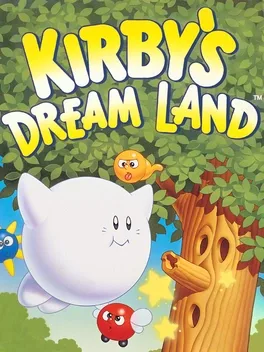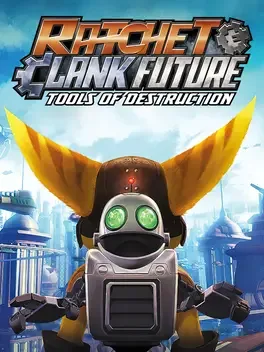(Originally published to Glitchwave on 2/9/2025)
[Image from igdb.com]
Kirby's Dream Land
Developer: Hal Laboratories
Publisher: Nintendo
Genre(s): 2D Platformer
Platforms: Gameboy
Release Date: April 27, 1992
It’s also hard to imagine a colorless, muted Kirby without his glowing pink sheen, considering he’s the video game character synonymous with that bright and effervescent shade. Alas, anyone introduced to the stumpy orb here wouldn’t be aware of his striking bubblegum hue because the two bits holding the original Gameboy’s visuals together could not render color in their graphics if its life depended on it. Hence, why Kirby and his magical space dimension of Dream Land is depicted in stark black and white. With decades of hindsight, seeing Dream Land with the Gameboy’s monochromatic visual lens is quite depressing because Kirby’s otherworldly stomping grounds is such a vivid splendor with all of its striking colors. However, I believe there is some merit to seeing Dream Land at its most modest. The moniker of this place that exists somewhere over the rainbow in the unfathomable reaches of the cosmos connotes that it's so fantastical that it can only be perceptible in the ethereal realm of sleep. It’s a little known fact, but folks back in the early to mid 20th century used to dream in greyscale due to the overexposure of black and white visuals depicted in film and television. With this in mind, the argument that Dream Land looks particularly hazy and dreamlike is a sound stance. It may not be as captivating as a Jean Cocteau film, but Dream Land’s graphical compromise still fits the intended tone that Kirby’s setting usually evokes.
Kirby’s typical gameplay of floating all over the horizontally-confined space from point A to B is not one of the recognizable series’ attributes compromised by Nintendo’s most primitive piece of hardware. However, in Kirby’s earliest iteration, one might be surprised at how many of the known intricacies of the standard progression process aren’t available. For one, Kirby’s distinctive ability to suck all that surrounds him into his mouth like a black hole and copy the physical properties of the creatures swallowed up in his orifice has been halved. Kirby can still inhale all in his vicinity like a Mach five tornado, but he cannot even swallow the creature, much less brandish its identity upon consuming it. The player will have to settle for spitting the contents in his mouth and pelting other creatures with them to kill two birds with one stone. The combo potential is somewhat nice, but I’d rather mix and match the elemental properties and lay waste to Dream Land’s denizens with a consistent streak of energy. I don’t think I’m alone in expressing this wish. To keep the gameplay from growing stale from the incessant expectorating, at least the game offers power-ups such as the spicy curry and mint leaves that both involve Kirby transforming his spit into a projectile weapon without the need to suck up ammunition. You’ll excuse me if I’m not exactly enthralled by the extremely limited range of gameplay variations on display.
However, one aspect we’ve all come to associate with Kirby that he still possesses in his earliest incarnation is the impressive ability to fly inexhaustibly through the air like a balloon. This physical characteristic of Kirby’s is the primary reason why his titles tend to be a cake walk, or I suppose a “cake float” in this context. Because Kirby's flight of fancy is still as boundless as ever, it makes his debut title just as breezy as expected. Dream Land consists of five levels with a boss as each level’s climax, and it is doubtful that the player will find themselves in a snag at any point. One exception could be the boss rush at the end which involves fighting each of the game’s four bosses in succession without any respite in between. The endurance test would’ve been far more tense if the individual bosses like the girthy oak tree Whispy and the cyclops storm cloud Kracko served a decent challenge and if there weren’t any checkpoints placed in between each fight. Surviving the roulette of repeated Dream Land bosses culminates in facing off against classic mainstay Kirby archrival King Dedede in a wrestling ring, and this lengthy and fairly complex final boss actually stands as an adequate way to end the game. It’s just rather off putting that the finale is cheapened by the simple and brief stroll leading up to it.
Perhaps my statement that ended my opening paragraph was a bit too dramatic. I would be floored if Nintendo tributed me with a character that shared my namesake, and I’m sure the lawyer was honored by their consideration even if he had never touched a game controller in his life. Still, if Nintendo had me play the game they created with my contribution in mind at its prerelease, I’d be concerned that the game wasn’t finished yet. I’ve come to realize that an aspect of the Gameboy was not only decreasing the number of pixels and colors from Nintendo’s console equivalent–the length was also compromised. Despite its hour-long length, Super Mario Land, for example, at least deviated from the setpieces of the standard Mario fare, which in turn made it refreshing. With Kirby’s Dream Land as the gumball’s debut and all of the inadequacies of the Gameboy at play, the game feels like a treatment for the series instead of a triumphant premiere. When a full meal of Kirby often fails to satisfy me, imagine how my stomach still proverbially rumbles after playing the rudimentary sampler with less caloric value.




No comments:
Post a Comment